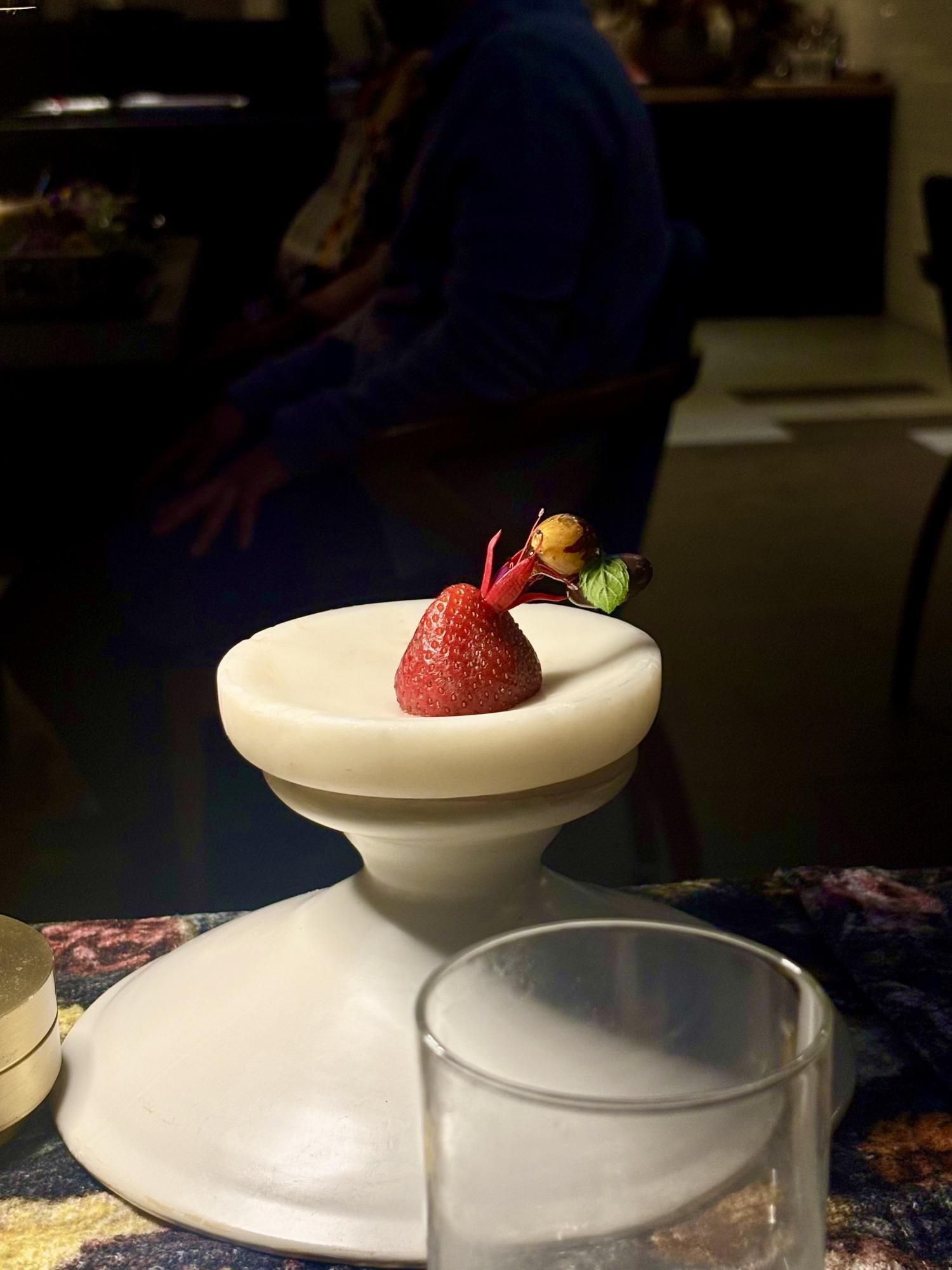Rather than settling on traditional flavors and presentation, the San Franciscan restaurant Merchant Roots has elevated the dining experience, curating a set menu of unique dishes in a novel experience. Merchant Roots began its restaurant journey in 2019 with a dining experience capped at 12 people per session with a rotating menu system. The concept of my set menu was “In Bloom,” focusing on edible flowers that are often an afterthought or ignored by other restaurants.
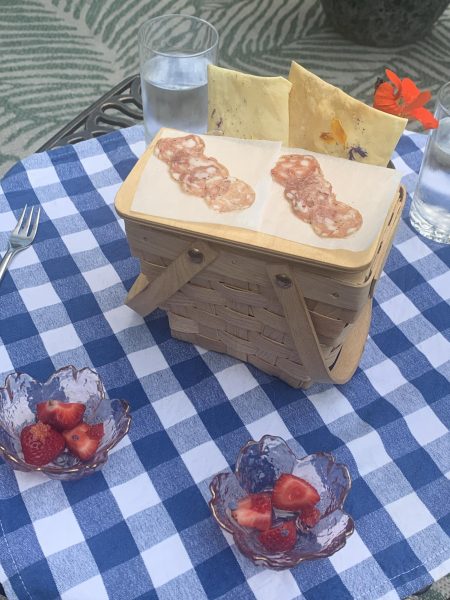
The first three appetizers each explored a different interpretation of the flower-based concept. The first dish was inspired by the traditional spring picnic, twisting the ideas of the typical picnic sandwich and jams. The first component was a flatbread seasoned with lavender salt, topped with prosciutto and a fennel-lavender fondue that was very simple and savory, the standout being the cheese—thick, creamy, and reminiscent of hummus. This was served alongside strawberries and crystallized violets, which were very sweet to combat all of the other extremely savory flavors and tasted similar to jam. The third component was asparagus with a puff pastry exterior served with green goddess sauce, which elevated the vegetable above being just cooked asparagus when the crunchy outside was dipped into the thick sauce, allowing the ingredients to work together.
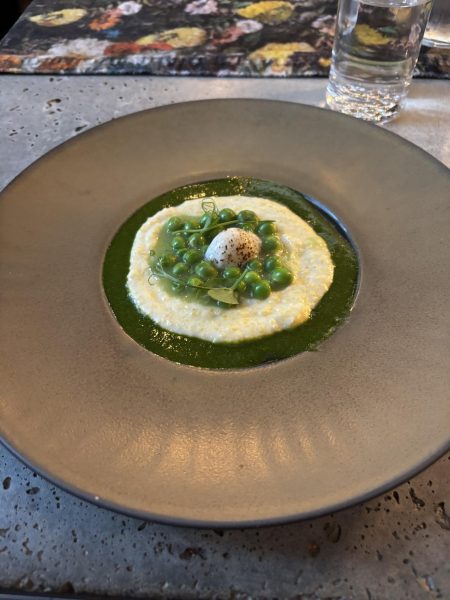
The second dish was a play on risotto with a focus on peas. The dish is constructed with a thin layer of pea sauce at the edge, then a layer of grits, and at the center of the bullseye were the peas and a quail egg. Both textures from the grits and the texture from the peas complemented the silky textures of the outer sauce and the quail egg, unifying the dish through the contrasting textures while also letting the saltiness of the green sauce not overpower the dish.
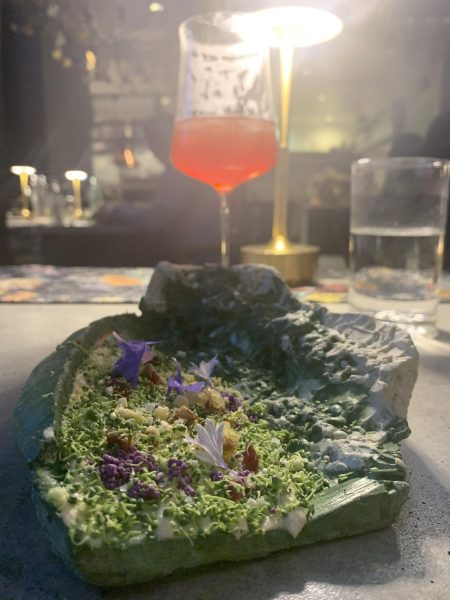
The third dish was centered on an Alpine Meadow with a bed of hummus with locally sourced wild flowers and three cauliflower preparations—kimchi, tempura, and candied—served atop a rock to mimic a field that is by a mountainside. I’m not a fan of cauliflower, but the texture worked well with the hummus while also remaining very light with the lemon from the hummus keeping the dish from becoming too rich. This dish was my personal favorite of the night.
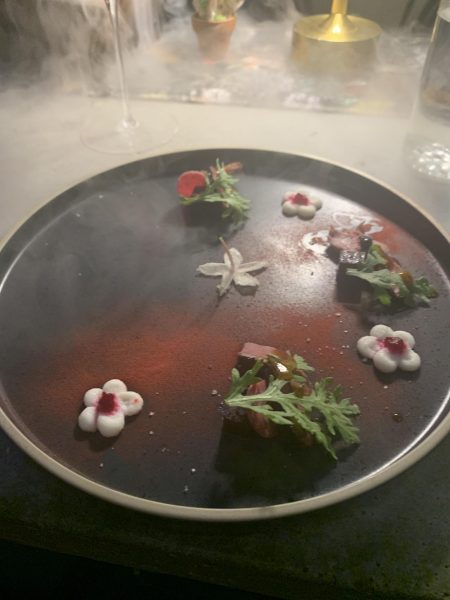
There were three main entree dishes that had three different forms of proteins. The first entree consisted of jasmine tea infused duck, rice pudding, squash, chrysanthemum leaves, and pickled beets with a candied jasmine. The standouts from this dish were the jasmine-tea infused duck which had a cross between the richness of duck and the delicate aroma of jasmine tea, but the rest of the dish was not as coherent as the other plates, flavor-wise. This dish’s focus was the jasmine flower as a flavor. The second entree was pasta with lamb, rose harissa, and savory saffron cream assembled into the shape of a rose to complete the flower motif. This was a simple dish that didn’t have any challenging concepts or awe-inspiring flavors and didn’t give a strong impression of the rose flavoring.
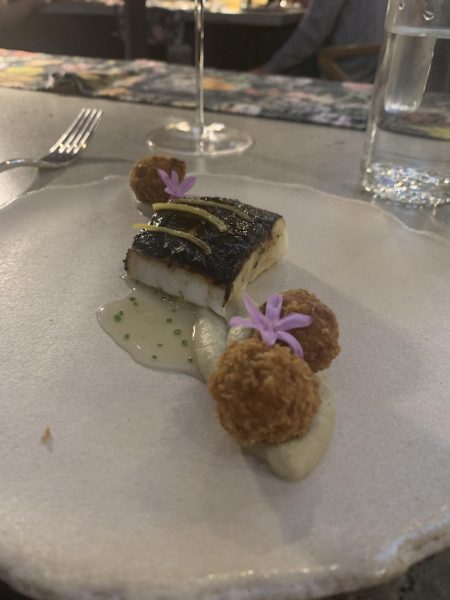
The third dish centered on the artichoke and was made up of a triple black sea bream with a glaze of black miso, olive, and garlic and fried baby artichoke with artichoke puree. The fish had a similar texture to crab, making the dish feel very luxurious, but this dish was very heavy and felt confusing with the rest of the courses since it was so similar to the two dishes prior and lacked a clear highlight; even the fried artichokes failed to leave a strong impression. While these dishes didn’t leave a lasting impression, their flavors were solid and their presentation beautiful.
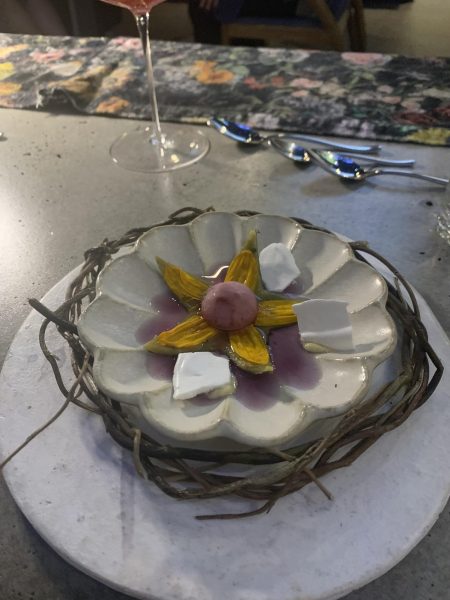
After a night of savory dishes, the set menu ends with three differing desserts, each with unique inspirations. The first dessert was presented by “blooming a flower” by pouring pea flower tea onto the shiso leaf wrapping to open up and reveal hibiscus sorbet with a mochi crepe and elderflower mousse and meringue. The sorbet was very light and refreshing which was a great contrast with the richer meals of the night while being sweet, but the elderflower components were overly sweet and overpowering, while the shiso leaf and mochi added a bitter edge I personally disliked.
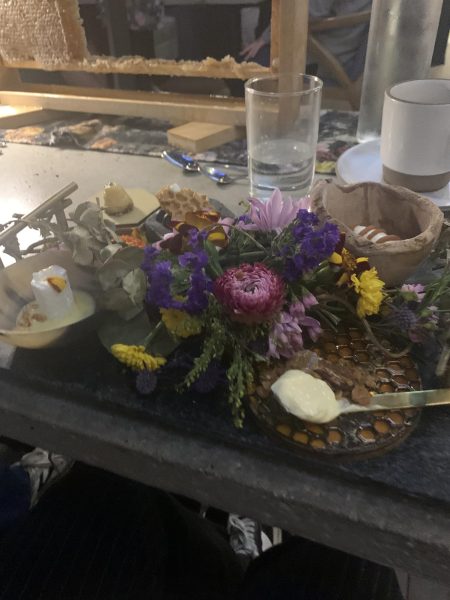
The second dessert came with a large honey comb decoration as a tribute to the bees while the actual dish was made up of chamomile gelato, a truffle made with bee’s wax instead of honey, a waffle with additional fruits, merengue in a sauce with toffee barley, and mascarpone cheese with honey comb. Each component contributed different textures and levels of sweetness to the dish which was cut through by the savory notes of the mascarpone cheese.
The final dish was made to mimic a hummingbird with a strawberry body with a fuchsia flower, a hazelnut caramel head, and a dark chocolate almond beak. It was a sweet and solid note to end the meal.
Overall, the experience made dining very special through the unique flavor combinations and carefully crafted presentation. Both the combination of the foods and the intimate dining environment really made the whole dining session very special. I would recommend Merchant Roots if you’re celebrating a special occasion or looking to explore inventive flavor profiles on a generous budget, especially since the menu changes every couple of months with different themes.

